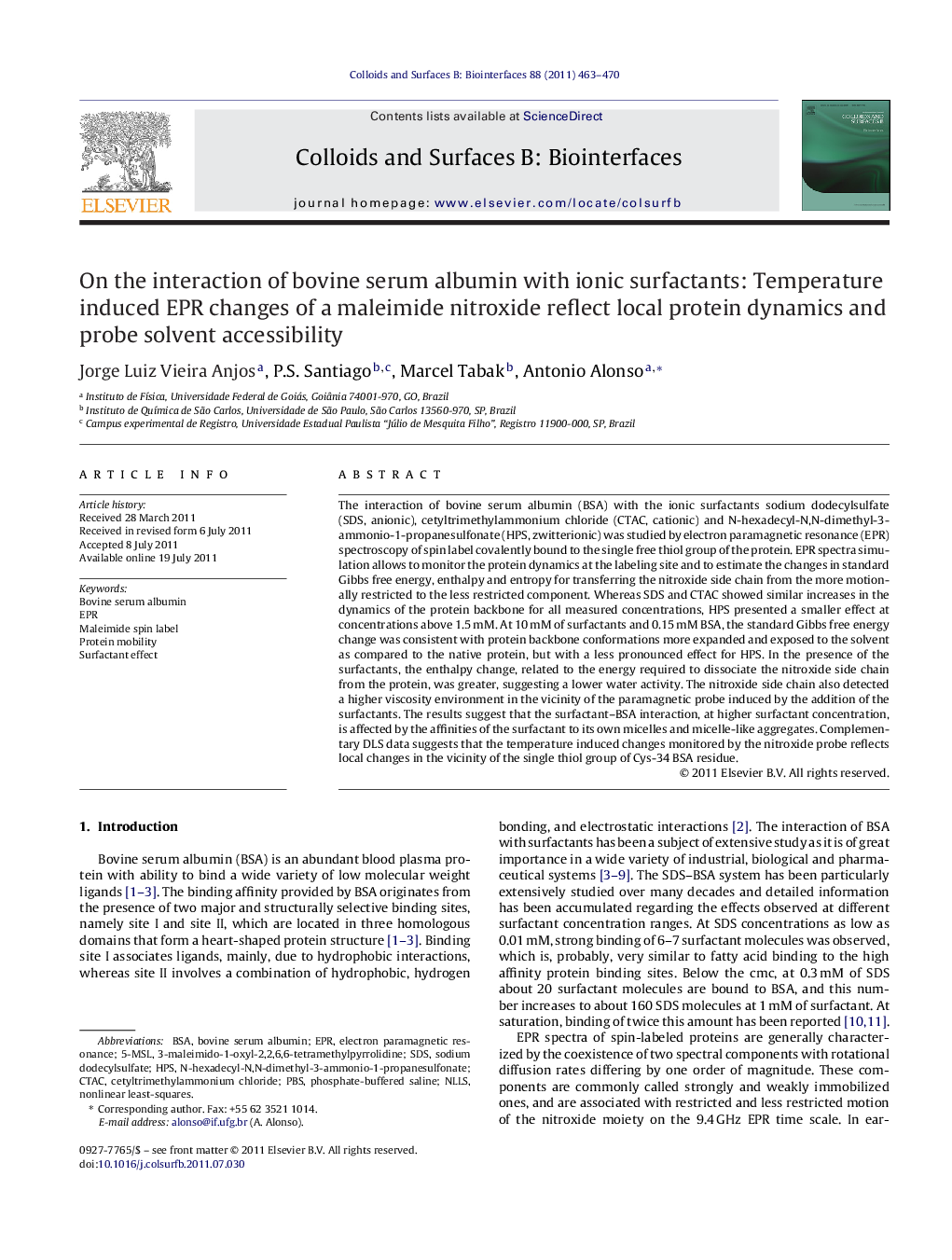| کد مقاله | کد نشریه | سال انتشار | مقاله انگلیسی | نسخه تمام متن |
|---|---|---|---|---|
| 601081 | 879930 | 2011 | 8 صفحه PDF | دانلود رایگان |

The interaction of bovine serum albumin (BSA) with the ionic surfactants sodium dodecylsulfate (SDS, anionic), cetyltrimethylammonium chloride (CTAC, cationic) and N-hexadecyl-N,N-dimethyl-3-ammonio-1-propanesulfonate (HPS, zwitterionic) was studied by electron paramagnetic resonance (EPR) spectroscopy of spin label covalently bound to the single free thiol group of the protein. EPR spectra simulation allows to monitor the protein dynamics at the labeling site and to estimate the changes in standard Gibbs free energy, enthalpy and entropy for transferring the nitroxide side chain from the more motionally restricted to the less restricted component. Whereas SDS and CTAC showed similar increases in the dynamics of the protein backbone for all measured concentrations, HPS presented a smaller effect at concentrations above 1.5 mM. At 10 mM of surfactants and 0.15 mM BSA, the standard Gibbs free energy change was consistent with protein backbone conformations more expanded and exposed to the solvent as compared to the native protein, but with a less pronounced effect for HPS. In the presence of the surfactants, the enthalpy change, related to the energy required to dissociate the nitroxide side chain from the protein, was greater, suggesting a lower water activity. The nitroxide side chain also detected a higher viscosity environment in the vicinity of the paramagnetic probe induced by the addition of the surfactants. The results suggest that the surfactant–BSA interaction, at higher surfactant concentration, is affected by the affinities of the surfactant to its own micelles and micelle-like aggregates. Complementary DLS data suggests that the temperature induced changes monitored by the nitroxide probe reflects local changes in the vicinity of the single thiol group of Cys-34 BSA residue.
Figure optionsDownload as PowerPoint slideHighlights
► Protein dynamics was monitored by EPR spectra simulation.
► SDS and CTAC have shown similar increases in the protein backbone dynamics.
► HPS presented a smaller effect at concentrations above 1.5 mM.
► The standard Gibbs free energy suggests more expanded protein backbone conformations.
Journal: Colloids and Surfaces B: Biointerfaces - Volume 88, Issue 1, 1 November 2011, Pages 463–470